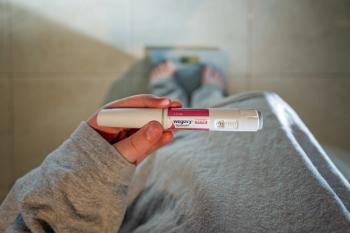
- Drug Topics January 2022
- Volume 166
- Issue 01
Update on Childhood Rheumatic Disorders
Emerging evidence is changing health care providers’ approach to treating pediatric rheumatic diseases.
An emerging body of evidence is changing perceptions and approaches to rheumatic diseases in children. Pharmacists can expect more demand for biologic agents for children with lupus, polyarticular juvenile idiopathic arthritis (pJIA), and other pediatric autoimmune conditions and less reliance on conventional disease-modifying antirheumatic drugs (DMARDs).
Early Biologics, Better Outcomes
Growing recognition that similar exposure to biologics in children and adults produces similar results could bolster the use of pharmacokinetic matching to extrapolate efficacy from adult to pediatric populations. Pharmacokinetic-based approvals could ease the path to more pediatric approvals and broader off-label pediatric use of agents approved for adults.
“Pediatric rheumatologists are well aware that children with JIA do respond well to biologics and that biologics have dramatically changed outcomes for children with JIA,” said Yukiko Kimura, MD, professor of pediatrics at Hackensack Meridian School of Medicine and chief of the Division of Pediatric Rheumatology at Hackensack Meridian Health in New Jersey.
But, Kimura said, “clinical inertia and insurers requiring step therapy––failing DMARDs before you can use biologics––are common barriers to starting biologics early in children.” For these patients, the question becomes, “How we can personalize treatments to get the best outcomes?”
Kimura was the principal investigator for the STOP-JIA trial (NCT02593006),1,2 an observational cohort study comparing 3 initial therapeutic approaches to pJIA: DMARDs only, biologics only, and a combination of DMARDs plus biologics. Data came from the Childhood Arthritis and Rheumatology Research Alliance (CARRA), a nationwide registry of more than 12,000 children with lupus, JIA, and other rheumatic diseases.
Although all 3 patient groups showed improvement, 59.4% of the combination therapy group had clinically inactive disease after 24 months compared with 48% of the biologics-only group and 40.1% of the DMARDs-only group. When the investigators observed disease activity over time, patients in the trial fell into 1 of 3 groups: slow, moderate, or rapid improvers. The trajectory analysis of treatment response showed that the 3 groups began to diverge within 3 months, Kimura noted. The single most important predictor of rapid improvement was early initiation of biologic therapy after pJIA symptoms appeared.
“Regardless of which treatment plan a child was started on, if they started a biologic within 3 months of symptoms appearing, their chances of being in the best response group increased by 3.5 times, supporting the idea that starting biologics is superior,” she said.
However, she added, there were a few children in the rapid improver group who received only conventional, nonbiologic DMARDs. For this small group of children, early initiation of DMARDs was the significant predictor of rapid improvement.
“Understanding how to distinguish patients who aren’t going to respond to methotrexate versus the patients who will do very well on methotrexate is critical,” Kimura said. “We need to be able to tell which patients need to start biologics early and which patients may not need to be exposed to biologics at all.”
Pharmacokinetic Approvals
One of the enduring barriers to treating children is the paucity of pediatric clinical trials compared with adult trials. Adjusting adult dosing to child sized bodies doesn’t always work.
“Children aren’t just little adults,” said Aimee O. Hersh, MD, an associate professor and chief of the Division of Pediatric Rheumatology at the University of Utah in Salt Lake City. “Pediatric patients are still growing and developing their bodies and their immune systems, so their reactions to treatment aren’t always the same as adults. And their disease isn’t the same.”
Up to 20% of all patients with lupus have childhood onset, Hersh said. This is a total of approximately 10,000 children and adolescents in North America alone. Children with lupus have higher rates of organ disease, including lupus nephritis; premature atherosclerosis with increased risk of myocardial infarction; multiple skeletal deficits; and multiple psychosocial impairments that extend into adulthood.
“Most of the treatment approvals in childhood lupus have been extrapolated from adult studies,” she continued. “Patient-reported outcomes could be very different for pediatric patients versus adult patients, as well as medication, disease, and [adverse] effects. Seeing more trials and outcomes through the lens of the child, and the adult managing their long term development is crucial.”
One way to learn more is to follow children over time. Hersh is the current chair of CARRA, which follows children for at least 10 years to glean longer-term data on the natural history and treatment outcomes of pediatric rheumatic diseases. CARRA and other pediatric rheumatology groups are also pushing the FDA to require pediatric arms of adult studies for new and extended approvals.
An FDA comparison of treatment response between those with pJIA and adults with rheumatoid arthritis (RA) suggests another approach to pediatric approvals. Pharmacy investigator and study author Renu Singh, PhD, reported on a response-and-exposure comparison of registration trial data for infliximab, tocilizumab, golimumab, and adalimumab in pJIA and adult RA.3
Results of the exposure comparison showed that exposure in pJIA trials was similar to or higher than exposure in adult RA trials across all 4 biologics. The sole exception was lower pediatric exposures to infliximab in patients weighing 70 kg or less. The pJIA response was similar to or higher than responses in adult RA trials, suggesting that children may be more like little adults than we currently believe—at least when assessed by exposure to di. erent biologics.
“These analyses provide support for the use of pharmacokinetic exposure matching for extrapolation of efficacy from adults with RA to children with JIA for products with an established mechanism of action,” said Mara L. Becker, MD, MSCE, a professor of pediatrics at Duke University School of Medicine in Durham, North Carolina. “This bridges a huge gap in clinical pharmacology and may allow for therapeutic approvals with an adequate pharmacokinetic study that matches a pediatric dose with an exposure associated with e. Cacy in adults. This is a big step forward in therapeutic approvals.”
Improving Adherence
Treatment adherence is a problem in most diseases and most patient populations—pediatric, adolescent, or adult. Community pharmacists have long shown that refill reminders can boost adherence for a variety of medications and on the hardware side, multiple companies have developed pill vials and other devices to remind patients when a dose is due. The iPersonal trial (NCT04358302)4 is bringing automated reminders to a home-based adherence and exposure response trial of hydroxychloroquine in children and teenagers with lupus.
The trial uses an automated pill vial cap, Pillsy, that provides audio, visual, and electronic medication reminders. If the vial is not opened within 10 minutes of a scheduled dose, it flashes visual and audible signals.
The patient or caregiver can also opt in to receive additional text and telephone reminders. The vials record all openings, including scheduled pill counts, erroneous openings, or refills, which allows the study team to reconcile pill counts and doses dispensed as reported by the electronic pill vial.
Patients were recruited from the CARRA registry. “If you have any doubts about the design of this trial, they met their enrollment goal within 10 days, during COVID-19,” Becker said. “And they have a waiting list of people who are interested in participating.” The trial was completed in mid-2021 and final results are pending.
Articles in this issue
almost 4 years ago
ASHP 2021: News and Updatesalmost 4 years ago
TICOVAC Vaccine to Prevent Tick-Borne Encephalitisalmost 4 years ago
2021 Pharmacy Award Winners, the Best of the Bestalmost 4 years ago
Managing T1D in Adults: How Can Pharmacists Help?almost 4 years ago
Pharmacists’ Plates Are Piled Highalmost 4 years ago
Pharmacists Central to Distributing Pediatric COVID-19 Vaccinesalmost 4 years ago
Patient Education Is Key to Reducing Adverse Effects of OTC Analgesicsalmost 4 years ago
Rx for VR: The Role of Virtual Reality in the Pharmacyalmost 4 years ago
The Benefits of Co-administering COVID-19, Flu Vaccinesalmost 4 years ago
Five New Year’s Resolutions for Independent Pharmacy OwnersNewsletter
Pharmacy practice is always changing. Stay ahead of the curve with the Drug Topics newsletter and get the latest drug information, industry trends, and patient care tips.























































































































